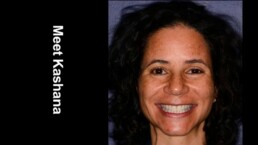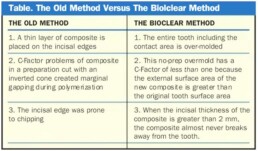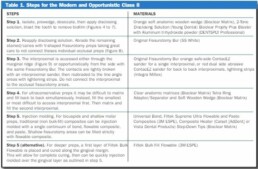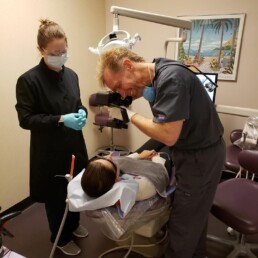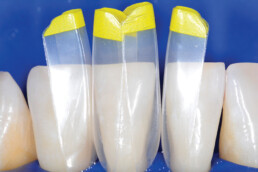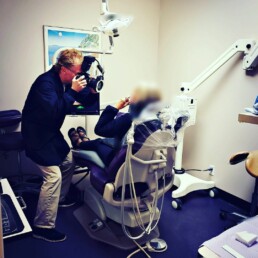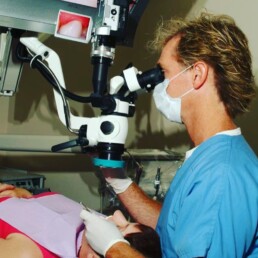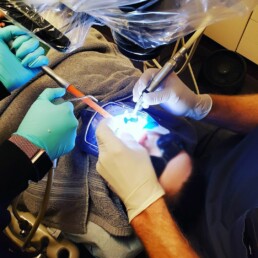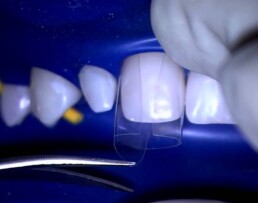Kashana’s Worn Down Teeth
https://youtu.be/4oFwPSfLjZY
Kashana was willing to make the trip to Tacoma, Washington’s Bioclear Clinic, from out of state, because she was interested in how the Bioclear Method could be employed to conservatively treat her black triangle teeth, repair her broken lower teeth and restore her thinning, chipping, upper teeth. Her issues happen to us all. From attrition due to unstable tooth-to-tooth contact such as unconscious grinding and abrasion resulting from abrasive toothpastes and toothbrushes to erosion caused by eating acidic foods or drinking carbonated beverages—there are almost too many ways for the enamel coating your teeth to wear down. Untreated, worn-down teeth can lead to additional deterioration and problems including pain and even infection. Which is all in addition to the obvious cosmetic concerns.
Fortunately for Kashana, even though her smile had been negatively impacted by damage and tooth decay Dr. Clark was able to restore her smile using Bioclear. The Bioclear Method is a relatively inexpensive, alternative to the porcelain veneers other cosmetic dentists would have fitted by grinding away portions of Kashana’s already worn-down teeth. Using Bioclear Matrixes, Dr. Clark was able to injection mold, tooth-colored, dental composite around Kashana’s damaged teeth—preserving the remaining tooth structure while fully restoring her smile.
Don’t just take our word for it though, press play and see for yourself.
Treating Severely Worn Lower Incisors
Older dental patients present unique challenges that require dentists to turn to innovative treatment solutions. Each patient treatment should be based on a multitude of factors. However, in the end, two simple questions should be posed to every patient who has reached the twilight of their life, defy the odds, and live on, and on, and on. First, do you think that you will live or could live another 5 or 10 years? Second, do want to outlast your teeth or would you like your teeth to outlast you?
The New Science of Strong Teeth
Most restorative dentists - here in Tacoma and elsewhere - have questioned themselves in regards to the way they prepare Class II restorations. I have certainly done so as my 57-carbide mowed through mostly healthy tooth structure, knowing that I was seriously weakening the tooth.
Microscopes for Esthetic Dentistry
One of America’s best-known architects, Frank Lloyd Wright, once said, “The physician can bury his mistakes, but the architect can only advise his clients to plant vines.” Recent dramatic changes in the practice of both restorative and cosmetic dentistry have placed us in a position that is now very similar to Wright’s architect. Dental patients now “grade” their dentists on the aesthetic quality of their results, and the bar goes ever higher.
Patient Centered Outcomes
Renowned cosmetic dentist Dr. David J. Clark, DDS, defines patient-centered outcomes vs process outcomes and promotes a more minimally invasive mindset in the profession that favors preservation and restoration of the natural tooth.
Michael’s Black Triangle Teeth
https://youtu.be/VVAfdaKHToY
Michael is a Doctor who contacted our dental office in Tacoma, concerned about his smile, because of the black triangle-shaped gaps between his teeth. His situation was not unique. You see, roughly 30% of adults have open gingival embrasures commonly known as black triangles. These dark gaps between teeth can make a smile look older than it is and even lead to dental health problems because they can result in excessive plaque or food particle build up. Fortunately for Michael, the Bioclear Method is a minimally invasive and cost effective composite bonding technique that’s an alternative to the porcelain veneers most cosmetic dentist would turn to in order to treat a case like his. It’s ideally suited to closing black triangle gaps, improving the integrity of his gums and the appearance of his smile.
Of course, you don’t have to take our word for it, you can press play and see for yourself.
Optimizing Gingival Esthetics
As patients become increasingly aware of the esthetic potential through cosmetic dentistry, there is an increasing demand for smile makeovers with porcelain. In our efforts to create beautiful smiles, we tend to focus on tooth color, shape, proportion and alignment as we are bombarded with restorative choices.
Microscopes & Zero-Defect Dentistry
Initially resisted by endodontists and mainstream dentists, there has been a recent surge of interest in microscope-enhanced dentistry. In endodontics, the microscope is becoming standard equipment. At a recent opinion leader’s forum, the question was posed: “Should microscopes be required for all endodontic treatment?” This incredible swing in endodontic opinion also is being felt in general dentistry.
Is Minimally Invasive Dentistry Better
Just the other day a company car belonging to a local dentist drove by. It was plastered with advertising from the office, heralding the merits of bleaching, lasers, and minimally invasive dentistry (MID). It was at that moment that I realized that it is high time for the profession to quantify, legitimize, and provide research on the noble but troublesome topic of MID. The term minimally invasive has been embraced by the medical community—hospitals and surgeons are now marketing a wide array of MI medical treatments.
Injection Overmolding for Aesthetics and Strength Part 2
Treatment of black triangles, which was rarely discussed 5 years ago, has exploded since then. Seven years ago, I invented and patented special diastema closure matrices, along with patenting the process of restoratively driven papilla regeneration (US Patent No. 8,393,897). I did a Google search at the time, and there were only a handful of results when I typed in the phrase dental black triangles. Since the release of Bioclear, I have lectured and published extensively about the Bioclear method for treating this difficult problem. The public has definitely begun to catch on, as witnessed by my office having been bombarded with patient requests to fly in for treatment or be referred to someone in their area that has received training. It’s incredible, really. Why the big fuss? Today, that same Google search yields a staggering 348,000 sites mentioning this problem/treatment.
